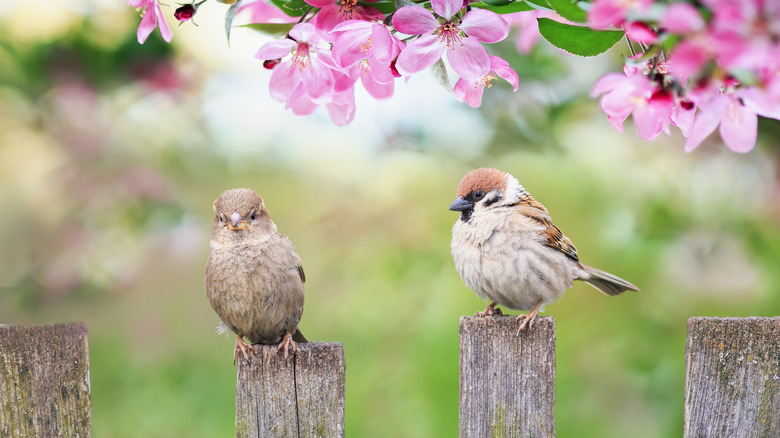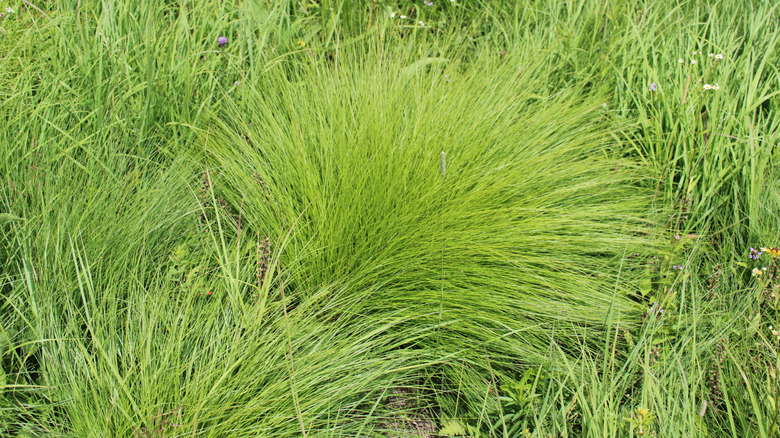The Stunning Low-Maintenance Lawn Alternative That Attracts Beautiful Birds
Move over manicured lawns, because the wild, natural look is getting pretty popular right now, and there are some fantastic low-maintenance lawn alternatives that look great and feed wildlife. Of course, traditional lawns have their time and place, but if you are all about bringing biodiversity into your garden and prefer minimal upkeep, you may want to consider planting prairie dropseed (Sporobolus heterolepis), a stunning ground cover that will have birds flocking to your yard.
Native to the U.S. and Canada, you might have spotted this perennial grass alongside railroads and in grassy meadows and prairies. Its dense tufts of thin, green leaves fall in graceful, arching shapes, adding softness and texture to any garden. In August and September, tan flowers decorate the leaves, and in the fall, the grass turns a stunning golden color. When the seeds of this grass mature, they fall to the ground and are eaten by wildlife. Many native birds, such as sparrows and juncos, will feed on their seeds, and the grass itself is preferred as nesting material.
At 2 to 3 feet in height, prairie dropseed is often used in borders, meadowscaping, and naturalistic planting. This gorgeous grass allows you to mimic the beautiful, rolling meadows and prairies you see out in the countryside in your own yard. Planting it either by itself as a lawn alternative or as ground cover within native flowers, such as purple coneflower (Echinacea purpurea) or black-eyed Susan (Rudbeckia fulgida), will make your garden a paradise for wildlife.
How to grow prairie dropseed to keep birds coming back to your yard
One of the great things about this native ornamental grass, in addition to bringing birds to your yard, is its ability to survive and thrive in many different conditions. It is hardy to USDA Hardiness Zones 3 through 9 and prefers a spot in full sun. It can grow happily in a wide range of soils, including clay soils, as long as they have decent drainage.
As prairie dropseed is a slow grower, it takes around four years to establish itself when grown from seed. This means that it is best to buy transplants or plugs of it from your local garden center. When you have transplanted your new grasses into your yard, ensure you are watering them regularly until they take root. If you do decide to grow prairie dropseed from seed, plant it in fall or early spring. During its first growing season, it needs 1 inch of rain or water per week, and you must make sure the soil is kept moist.
Once it has settled in, prairie dropseed is incredibly low-maintenance, tolerating both drought and periods of saturated soil. Tidy up the grass in late winter or early spring by cutting or pulling off old foliage, as this will help it put on new growth. Leave the old growth for birds to make their nests. However, don't worry about deadheading the flowers as once they start to seed, this will provide a delicious food source for visiting birds, as well as keep them coming back for more.

